- Home
- Stephen Hunter
Sniper's Honor Page 15
Sniper's Honor Read online
Page 15
Nordyne:
Facing
The Future
He examined the lines more closely. They resolved themselves in left profiles of generic humans, earnestly (and, he had to admit, brilliantly) scrubbed of distinguishing tribal or ethnic features. Two humans facing the future, what could be more harmless?
Then there was the name. Disambiguated, it meant “northern power,” another meaningless post-industrial trope. Typically corporate, typically opaque, designed not to express but to enable, in the way of letting any potential client project onto the image of a bright future faced squarely behind considerable power.
It also contained links, “Our Philosophy,” “Our Staff,” “Our History,” and “FAQs”; none of them worked. No business publication had covered its founding, which was, for the record, in Lausanne as opposed to Genève, where most of the big, swaggering, sharkish multinational corporations were headquartered. It boasted no staff; there was no preening CEO to pose for business-style photography of plump rich men in suits with smiles showing yellowed teeth. It was registered only as a trademark but not as a corporation, and its stock, if it existed, was privately held. It seemed to have no assets except the money it paid via a Swiss bank. Gershon sniffed the air, as he always did when his hunting instinct was aroused, and he leaned forward to the screen before him and focused his entire thought process on the mystery of Nordyne’s platinum.
He thought, he thought, he thought. If the bad boys of Hezbollah were trying to pick up a small tac nuke, they’d need a great deal of up-front dough, but assembling it out of gold, diamonds, bearer’s bonds, and other forms of wealth might set off alarms all through the intelligence community, and sooner rather than later they’d have a drone-fired Hellfire up their asses. Platinum’s utility, liquidity, and lack of glamour might do the trick, for many reasons. Move the physical stuff to a holding vault and deliver ownership certificates, easily carried, to a middleman, and somehow whoever was selling—Chechen rebels, big players in the game, corrupt or ideological Chinese military, money-hungry Pakis, demented Hindus from the overpopulated subcontinent, maybe even a money-grubbing rump group of ex–South African military—might be able to put a big egg in their basket for scrambling Tel Aviv into fissionable ruin. That was one thesis, but only the most obvious. It had too many flaws. Everybody watched nukes, and it would be hard to move one without every satellite in the heavens sending a flash-coded message to home base. The movement of the weapon—delivery, security, transpo, storage, deployment, tactical initiation—would be intensely fraught, interception-accessible any place along the route, and after all, that was what drones were for. You went anywhere with a tac nuke and you got Hellfire and it was a bad day with temperatures ranging in the ten thousands at blast epicenter. It might not even be American or a Hellfire, as all the players in the nuke game had a vested interest in keeping newbies away from the table.
Ten thousand troy ounces at current market value was about $15.9 million, call it $16 million. That was easily within the budgetary reach of most big InterTer, Inc. operations, from Hezbollah to Al Qaeda to Taliban, but it also X’d out the myriad of smaller wannabe local actors, the MILFs (Moro Islamic Liberation Front), for example. Again, the big guys were watched very carefully by so many players that a $16 million transaction would be noted and acted upon.
Gershon concluded that this was somebody new, not a longtime gamer, somebody with very deep pockets. The attributes—big money, great security, ubiquitous but banal wealth methodology, low profile—suggested something like a onetime high-pub-value hit, a giant stroke that would astound the world. That would mean: first-class operators suddenly disappearing, falling off the grid, as they were absorbed into the new operation. If you had a minimum of $16 mil in play, you probably had more, and that would mean you could get very good guys on your team. Talent, as always, was expensive.
So: Who was missing? Who had disappeared?
The institute had a database of the world’s leading operators, indexed by niche, constantly updated. Spy novelists had gotten some things right! So he demanded of the mother lode before him:
List A (operation executive and administrative experts): Missing agents 01-01-13 to present.
There weren’t many. Anwar El-Waki, a veteran commando leader blooded heavily in Afghanistan, Iraq, and back in Afghanistan, had apparently quit the game and retired to a village in the northern Pakistan tribal area from which he had disappeared. But he was an AK-74 and RPG guy, not the sort to be involved in an international operation based on subtle financial manipulations. He threw grenades, he didn’t buy atom bombs. Dr. Jasmin Wafi, University of Saudi Arabia physicist who had been educated at King’s College, Oxford, was briefly missing, though later discovered on sex holiday in Bangkok, where his penchant for small boys attracted little attention.
Gershon sifted through the other categories.
Nuclear scientists?
Chemical-biological engineers?
EMP experts?
Missile technicians?
High-tech assassins?
Explosives professionals?
That yielded nothing except a few more names of small-potatoes guys like El-Waki and Dr. Wafi, of no particular potential for the kind of operation Gershon suspected might be building.
His next move was to go by area rather than specialty and to ask the institute’s database if, on a country-by-country or region-by-region basis, there were any missing men, units, whatever.
Again not much.
But . . .
But . . .
Yes, there was a little “but . . .” In Grozny, capital of Chechnya, a former sergeant in the Chechen army turned up as disappeared, though his vanishing was resolved when it was learned he had been in prison. However, on his release, whoever had been watching him stayed with him long enough to learn that he had formed a security group he called Intrusion Prevention Associates; he had hired fifteen members of his clan. The training, according to satellite blowups acquired routinely from either the Americans or the French or maybe even one of the seven Israeli birds, showed primarily drills on what would be called “area security.” That is, protecting something from somebody: where you set up outposts, how you run patrols, where your observation points are, how quickly can you get your people deployed to a point of attack. The idea, Gershon supposed, was to build a reliable cadre of security professionals in hopes of luring international corporations into establishing plants, factories, laboratories, what have you, in the Chechen postwar economy, which was going to take off any day now. Question from Gershon: Where’d he get the start-up dough? The training facility, while not up to Israeli or Western standards, looked surprisingly sophisticated. Where’d he get the moolah? Who paid?
It didn’t take long by routine network penetration maneuvers against the Chechen company for him to track down and view the accounting records. A check for $250,000 had cleared through a bank in Lausanne and was from a firm called Nordyne.
CHAPTER 25
Kolomiya
The Museum Annex
A certain donation had been made, and by and large the curator was quite helpful. He was young, fluent in Russian, eager to talk to Westerners, and took them to an outbuilding behind the museum proper.
“Times change,” he said. “Tastes change. We try to keep it interesting. Now we have the best of the big battle pictures on display, but it was a cottage industry in the old Soviet empire, particularly after the war. If you could paint a tank, you had a job for life under Stalin.”
“Do you think of it as art or history?” Reilly asked.
“It’s really politics,” he said honestly. “You see what the Russians valued and how they found those who could give them that and excluded those who could not. The paintings are technically correct, but that is the only kind of truth they tell. That’s not art, is it?”
He unlocked the door and took them in. It was like a library of paintings, most of them shelved edge-out in bins in the three or four rooms of t
he secondary building.
“I wish I could help you. No index, alas. I was not here when the restoration came and an earlier curator made the winnowing decision, picking the best by his lights. The museum draws well enough to keep going, so I am not going to second-guess him. Someday I’ll go through and see what’s here. I do think there is some sniper imagery here, it certainly seems logical, but I cannot address you to any particular bin or room.”
“We’ll be fine,” said Swagger.
“It’s two; the museum closes at six. If you need to come back tomorrow, that’s okay. And as I say, madam, any coverage that can appear in The Washington Post will be appreciated. Publicity: the new treasure.”
“I won’t let you down,” Kathy said.
After he’d left, they agreed to start at opposite ends and work to the middle.
The time passed, and images of battle, highly stylized by the dictates of Soviet socialist realism, fled under their sorting. The Russians were big on machines, with the T-34 the most prized of them all. That meant a lot of Panzers, Panthers, and Tigers were depicted, most of them burning or spilling burning men. After a while Bob grew bored with the German beasts catching the raw end of every exchange, especially since the casualty lists said otherwise, but the tank battle was the undeniable king of postwar combat art, with the air fight the second. The Russians, like all who had suffered terror on their behalf, hated the Stuka almost as much as the King Tiger tank, so any perusal of socialist-realist war art yielded fleets of burning, smoking Stukas, their dome canopies shredded by spiderwebbed galaxies of machine-gun fire, their gulled wing joints leaking flame and smoke, their unfoldable landing gear turned to scrap, as they augured in for a last rendezvous with Planet Earth while just behind them a triumphant Yak-3 or some other Red war prince was already into its victory roll. The aviation artists seemed to have a special gift for cloud work; these storied dogfights always took place against a vivid panoply of tumbling, backlit vapor architecture that could have supported Valhalla, either knifed by lighting or rouged to a healthy sun glow.
Of land warfare, much less, perhaps because the figure work was a little shaky. Only a few of the artists called upon to serve had much luck coming up with men hunching behind cover or running through fire, and even less with the ragged sprawl of combat trousseau worn by such men in such circumstances. In this view of war, the tunics and shirts were always immaculate, pressed, precise, because nobody wants to deal with rips, folds, drapes, weathered stains, salt crust, all that hard stuff of fabric under stress as worn on a body under stress. As well, unfolded, the uniforms were a proper platform for display of rank and medal, which seemed to be a fetish on both the Russian heroes and the German villains, many of whom—in fact, nearly all of whom—were members of the SS. From the paintings, you’d think the SS had invaded Russia with just a few trucks and autos from the larger German army in the background. That was the one war the Waffen-SS had won—the war for art direction. They had the coolest uniforms, no doubt about it.
Of partisans, more bridge and rail blasts, a few vehicle convoy ambushes, a few martyrs’ executions and/or heroic passings. Bak died two or three times by two or three different techniques, once shot, once hanged, once bleeding out in the arms of his men.
Other images of sacrifice enjoyed some popularity. Heroic doctors and nurses were a tradition, some operating even as the fighting raged outside the medical tent or the shells detonated not too far away. Our Fearless Leaders was a theme that pretended the Russian general staff wasn’t drunk for four solid years and were all men of such physical prowess that they could have played interior linemen in the NFL, including, always paramount, the big boy himself. Leading Charges appeared to be a close second to Our Fearless Leaders in the human-interest category, and it seemed the primary requisite of leading a charge between 1941 and 1945 on the Ostfront was the strength to lift a handgun high, whether it was a nice Tokarev automatic or an antiquated Nagant revolver. Swagger had done three tours in Vietnam and didn’t believe he’d ever unholstered a pistol, much less led a charge with one, much less seen it or heard about it, but it seemed to ignite the Russian imagination.
Even defeats were occasionally chronicled. The 113th Transportation Brigade Defends the Bridge at Chortkiv was one, featuring truckers shooting it out with German paratroopers at some long-forgotten medieval bridge the airborne people had dropped in to demolish. Bob could tell they were airborne because of the distinctive helmets and camo battle smocks they wore and the odd weapons they carried, all unique to Fallschirmjäger, as the socialist-realist artist had clearly researched his stuff. And Bob saw the argument that painter was making: the truckers were noncombat guys miles behind the lines, but when the commandos appeared from nowhere, they gunned up and did their best, though outclassed by the presumably more proficient special operators who, in the picture, commanded the bridge and the far slope of the river and pretty much martyred the transpo amateurs. It must have been a good day to be a German paratrooper and a bad day to be a Russian trucker.
And yes, now and then, some sniper imagery. The best was a partisan in a tree, in full camouflage, barely visible in the foliage that surrounded him, giving his all to his M91 and PU scope. It had all the nuances of the sniper’s craft right and proper, though Bob had never been in a tree in his life, but the tension in the body, the tightness of the musculature, the lightness of trigger on finger, all that was right. Sniper Viktorvich Brings Death to the Enemy, a brass title plate announced, after Reilly translated it; he had no doubt that Sniper Viktorvich had indeed brought death that day. Bob would have proudly bought that one had it been for sale.
But at the end, it was a wash. They unearthed a total of three sniper paintings beside the one of Viktorvich bringing death, one of them even a woman sniper, in a snowy setting somewhere, moving into position to pick off some hun.
The young curator arrived exactly as they were returning the last of the paintings to their bins. “You know, I had a thought,” he said.
“Wonderful,” said Reilly. “We’re fresh out of them.”
“As I say, I took over in ’07, but the man I replaced had been here for over thirty years. And he was the mentee of the man before him, who founded the museum in ’46 and had been in Bak’s partisan army. It occurred to me that the founder might have taken or hidden these ‘suppressed’ paintings you’re looking for—that is, instead of burning them, as NKVD demanded. He was a Ukraine patriot, after all, and not a fan of the Russians. Besides, the Russians had condemned Bak’s army and declared all in it enemies of the state. That was before Bak was officially reformed, when Ukraine became an independent state. At any rate, I called, and yes, he does have some paintings from the founder, though he has not looked at them. I will give you driving instructions.”
“You are so helpful,” Reilly said. “Maybe we’ll get lucky.”
* * *
Just as a precaution, Swagger did not take the directions that the curator had provided, but charted another course. They got there to discover a feisty white-haired old lion who had nothing but contempt for his successor—“Young idiot, not even Ukraine!”—but he did have some paintings, which had been rolled into tubes, wrapped and forgotten. He told a long story that Bob pretended to listen to, as the old guy seemed under the impression that Bob understood him. But after a bit, it was time.
On his dining room table, he unwrapped an old, old package as dust rose and the senior curator’s wife clucked and twitched at the defilement of her home, to her husband’s utter indifference. One roll, five oils on canvas were unveiled; he delicately unscrolled them and peeled them free, one at a time. It was clear why the Stalinists thought they’d be better off destroyed; they told too much truth for totalitarian minds. They were far from socialist-realist glory. The first was a somewhat crude evocation of the SS shooting the Jews outside of either Kolomiya or what used to be called Stanislav, though it made no difference, as actions had occurred at both places. The second was a starved farm woman, he
r face crushed in grief, warding off nurses who’d come to feed and rescue her. She was clearly too weak to care and would die soon. The third was a burning village, bodies all over the ground. Yaremche? Probably not, as no mountains were visible. It could have been any place in Ukraine in any year from 1941 to 1944. The fourth was five partisans hanging at a gallows, no other details. And the fifth was the mass execution of some German prisoners of war, by partisans. It was squalid, for the men begged even as the gunners sprayed them.
“Nothing,” said Swagger. “And that’s it?”
The old man answered. “Paintings, you said. Yes, that’s it for paintings. However, there are some items with pictorial representations on them. Folk art, they would be called, certainly not a part of the formal socialist-realism tradition. You know, peasants or soldiers who scribbled something on something. A textile, a piece of pottery, a gunstock. I have a few. It’s not much.”
“We’d like to see them.”
He brought out an old leather suitcase, much battered, sealed off by straps. It took a second or two for him to unlock and uncinch the thing and open it. He brought out the objects one by one and placed them on the table. It was a collection of the shabby and the forlorn, most crude and earnest, by amateurs. They even had an American Indian feel to them, like those images of the Little Big Horn from the Sioux point of view, both childish and gory.
Two pictorial weavings, musty of smell, which appeared to show pictographs of partisans and Germans shooting at each other. A ceramic pot with a German tank burning on it. A heroic triumvirate of Ilyushin Sturmoviks flying in tight formation, on a plate, poorly drafted. And finally, another plate.
Bob looked at it, struggling to make sense of the lines, which were messy, and the jumble of the composition, which was uninformed by any sense of perspective, but ultimately he found the right angle from which to view it and saw that it depicted a rifleman hunched in trees, bent over, concentrating on, giving himself to a generic rifle; far off, some kind of netting bore three figures while fluffy clouds rose around it. Loki shoots at Thor in Valhalla? William Tell updated to gun guy taking out Geisler in Switzerland? What could it be?

 Point of Impact
Point of Impact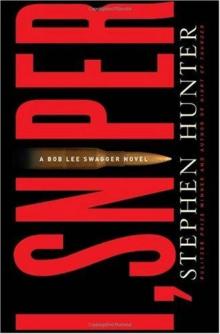 I, Sniper
I, Sniper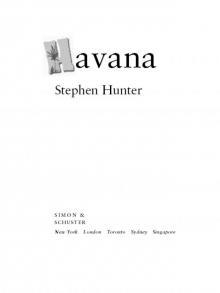 Havana
Havana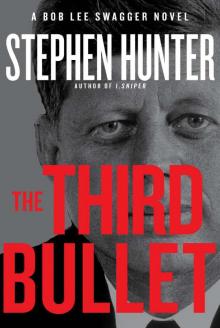 The Third Bullet
The Third Bullet Sniper's Honor: A Bob Lee Swagger Novel
Sniper's Honor: A Bob Lee Swagger Novel Dirty White Boys
Dirty White Boys The 47th Samurai
The 47th Samurai Hot Springs
Hot Springs G-Man
G-Man Black Light
Black Light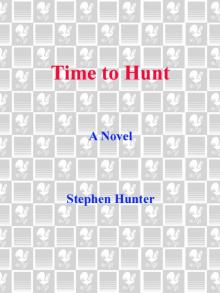 Time to Hunt
Time to Hunt The Day Before Midnight
The Day Before Midnight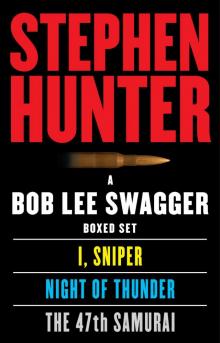 A Bob Lee Swagger Boxed Set
A Bob Lee Swagger Boxed Set The Master Sniper
The Master Sniper Game of Snipers
Game of Snipers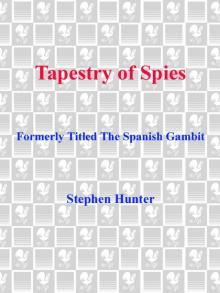 Tapestry of Spies
Tapestry of Spies Citadel
Citadel The Second Saladin
The Second Saladin Stephen Longacre's Greatest Match
Stephen Longacre's Greatest Match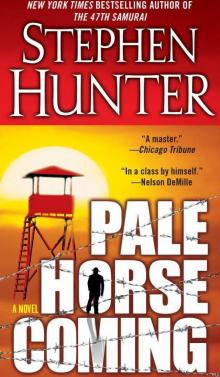 Pale Horse Coming
Pale Horse Coming Soft Target
Soft Target Dead Zero
Dead Zero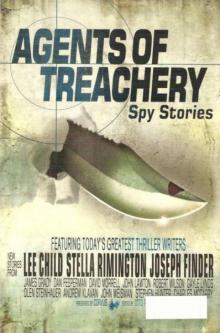 Casey at the Bat
Casey at the Bat The Third Bullet bls-8
The Third Bullet bls-8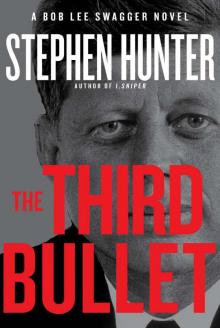 The Third Bullet: A Bob Lee Swagger Novel
The Third Bullet: A Bob Lee Swagger Novel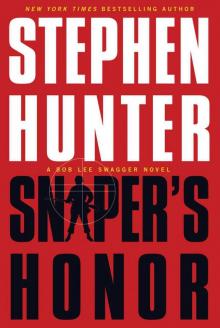 Sniper's Honor
Sniper's Honor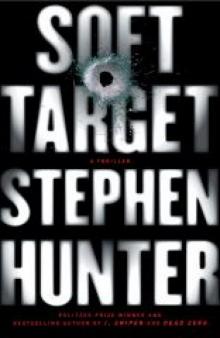 Soft target rc-1
Soft target rc-1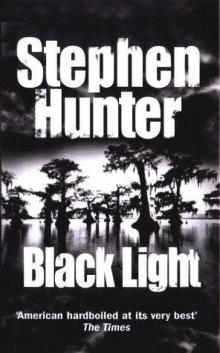 Black Light bls-2
Black Light bls-2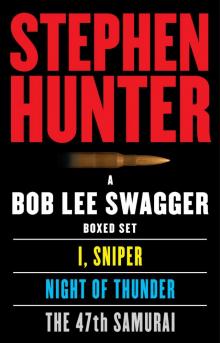 A Bob Lee Swagger eBook Boxed Set: I, Sniper, Night of Thunder, 47th Samurai
A Bob Lee Swagger eBook Boxed Set: I, Sniper, Night of Thunder, 47th Samurai Havana es-3
Havana es-3 Hot Springs (Earl Swagger)
Hot Springs (Earl Swagger)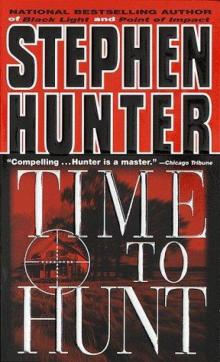 Time to Hunt bls-1
Time to Hunt bls-1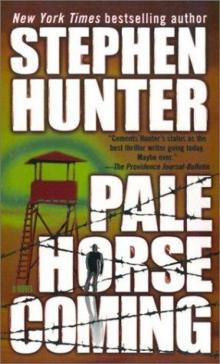 Pale Horse Coming es-2
Pale Horse Coming es-2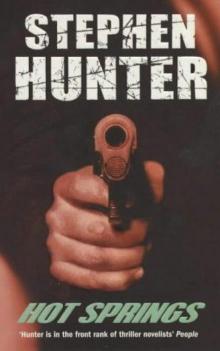 Hot Springs es-1
Hot Springs es-1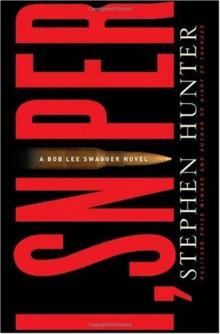 I, Sniper: A Bob Lee Swagger Novel
I, Sniper: A Bob Lee Swagger Novel